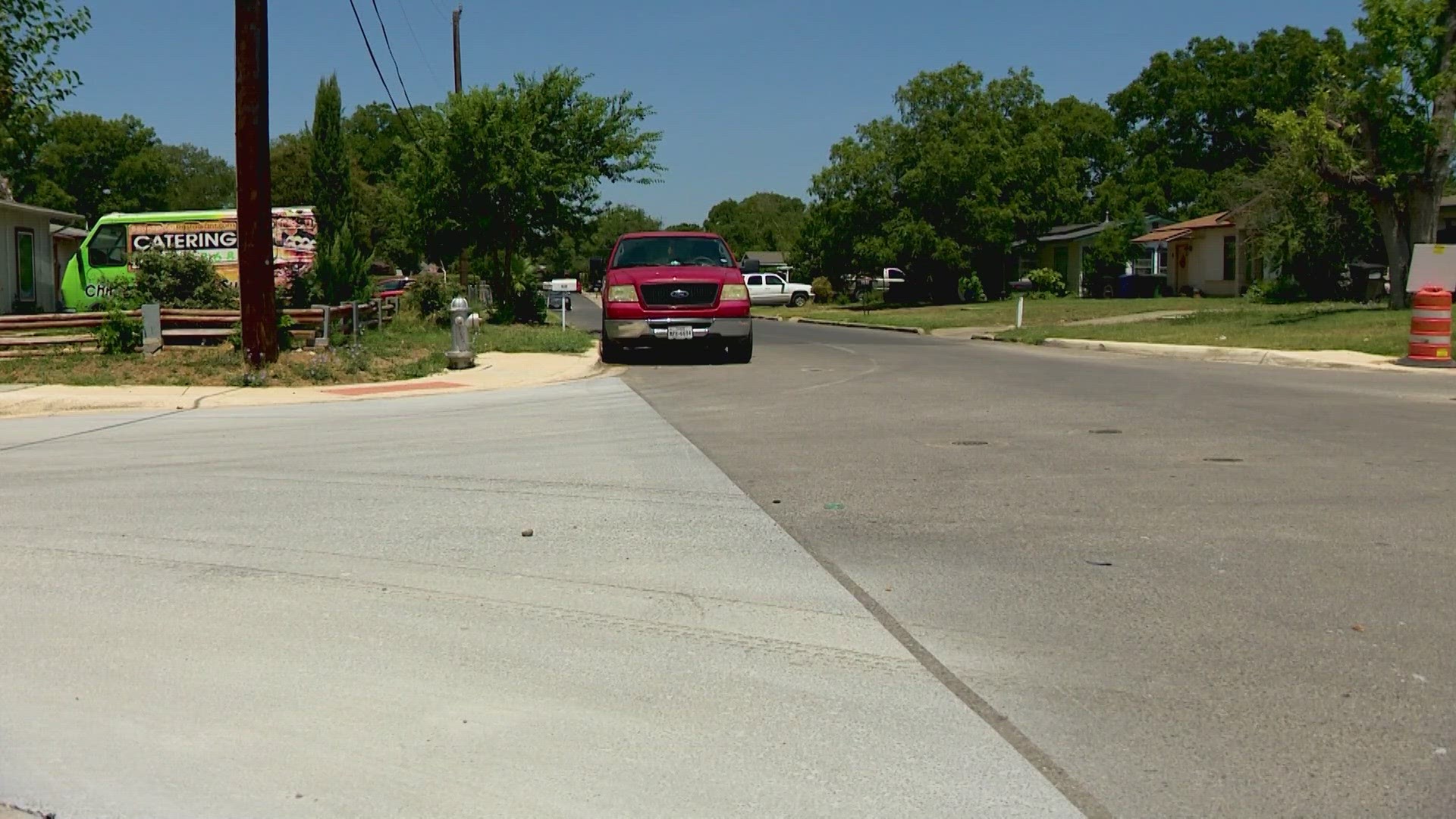SAN ANTONIO — San Antonio continues to be under an excessive heat warning, making surfaces like roads extremely hot. According to the Environmental Protection Agency, conventional paving materials can reach up to 150°F during the summer.
In April of this year, the City of San Antonio began treating select roads with cool pavement. Cool pavement is a water-based asphalt treatment that is applied to existing roadways. It protects the road while also reflecting heat, making it cooler. Twelve sites were chosen across all ten city council districts. Murray Myers, senior sustainability manager for the city, told KENS 5 in April that sites where chosen based on which areas in San Antonio were the hottest, along with pavement conditions.
"If the surface temperature can cool down, we can also cool down the neighborhoods by a couple of degrees," Murray said.
As of last week, the city completed the treatment of all 12 pilot locations, including Piper Dr. between Loy and Freeman Dr. in District 7. KENS 5 staff tested the difference between the cool pavement and asphalt with an infrared thermometer and found a ten degree difference. Murray said the product being used there is a slightly darker coating, and is one of the newer products being tested.
The senior sustainability manager said preliminary data shows between a seven and ten degree decrease, although they could see up to a 15 degree decrease in surface temperature. He said the results have aligned with what was seen in Phoenix and Los Angeles.
Ten degrees may not seem like a significant decrease, however, UTSA Assistant Professor Dr. Esteban Lopez-Ochoa explained the ten degree difference isn't just at that point in time, it's ten degrees lower over an extended period of time.
"Heat strokes and all those heat related illnesses are triggered by a cumulative impact of being exposed to heat," Dr. Lopez-Ochoa said.
UTSA researchers are now in their second phase of research: data collection. They began collecting data in late June. The team is testing a total of five products from four companies to see which works best. They are collecting data on surface temperature, air temperature and reflective radiant heat. They are also collecting data on streets nearby that don't have cool pavement applied.
"So as we speak with our team, we can see that the cool payment is working in some areas more than others, depending on the wind direction and all of those things," Dr. Lopez-Ochoa said. The team also collects data several times a day: 6 a.m. to 7 a.m., 12 p.m. to 1 p.m., 3 p.m. to 4 p.m. and 8 p.m. to 9 p.m.
"That allows us to see throughout the day and throughout the spaces treated and control how much the heat is changing and how much the the environment is reacting to the equipment and to those areas that don't have the pavement," Dr. Lopez-Ochoa said. Next week, the city will take their final measurements.
UTSA researchers plan to present their report to the city in December. Murray said the city also has another set of pilots planned for next year.

